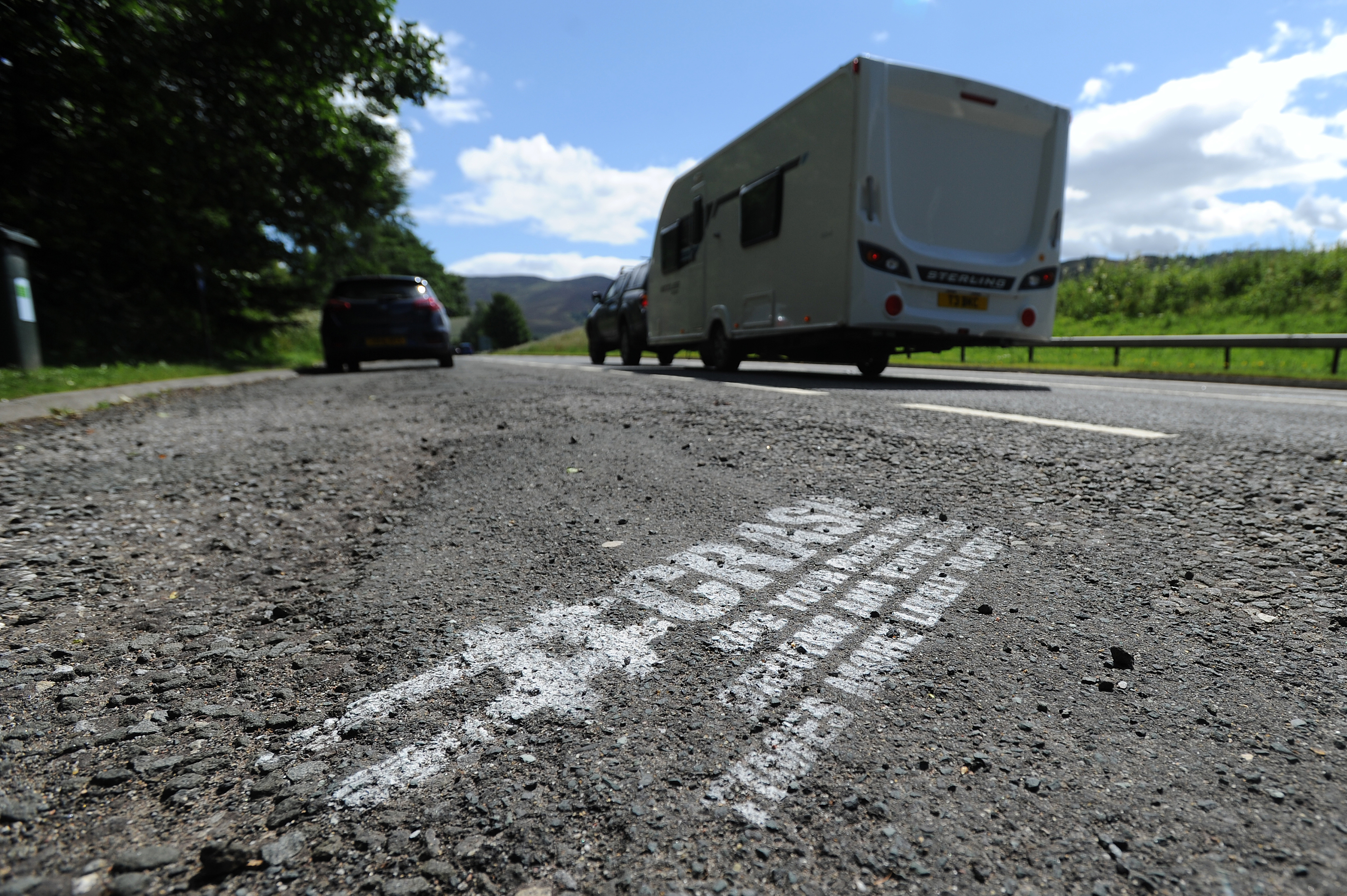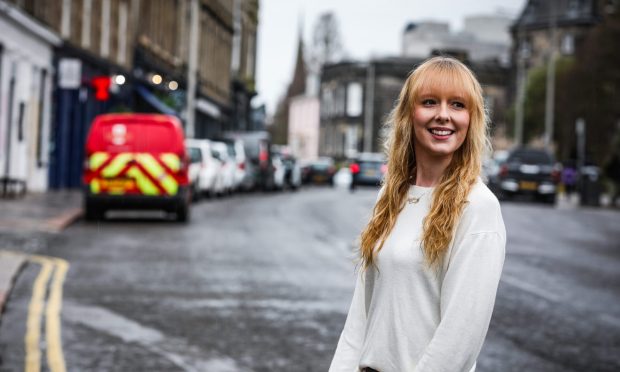Tarmac graffiti on the A9 which left some motorists scratching their heads has been revealed to be part of a Government-backed safety operation.
Slogans appeared in laybys along the route last week, leaving some wondering if a vigilante had decided to add their own touch to the official campaign.
The A9 Safety Group is using the slogan Looks Can Kill to highlight the dangers of glancing at a mobile phone while driving.
One motorist who contacted The Courier said: “They are in pretty much every layby up and down the A9 from Auchterarder to Perth.
“When I first saw them I thought someone was doing it themselves. I actually thought it was a really good idea as the A9 is such a dangerous road, even without people looking at mobile phones.
“Hopefully it will make people think twice about looking at their phones while driving as it has the potential to kill someone.”
A spokesman for Transport Scotland confirmed that the signage along the A9 was part of the official crusade.
Transport Minister Humza Yousaf launched the campaign, highlighting that you are four times more likely to crash if using a mobile phone while driving, on June 26.
He said: “The consequences of using mobile phones for either making calls or for social media are all too apparent. The work being carried out by the A9 Safety Group clearly indicates that drivers are putting both themselves and others at significant risk with this activity.”
The campaign research reveals that 30% of people have seen someone using social media while driving and one in five people have witnessed selfies being taken behind the wheel.
68% of Scots have noticed someone texting behind the wheel and a massive 89% have seen drivers talking on a hand-held mobile phone.
Chief Inspector Louise Blakelock from Police Scotland said: “Mobile phone use continues to be a concern for Police Scotland and the wider use of phones for social media use is now being identified as a contributory factor in a number of collisions.
“In the last two years a high proportion of fatal and serious accidents on the A9 trunk road are likely to have been caused by driver fatigue or distraction.
“In addition to this initiative Police Scotland will be undertaking a national enforcement campaign in July to further raise awareness. The level of concern with this activity was recently reflected in the doubling of the penalties involved for hand held mobile phone use.”










